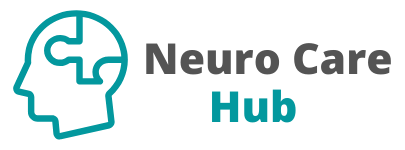Table of Contents
- Understanding Neuroplasticity in Pediatric Care
- 1. Applied Behavior Analysis (ABA)
- 2. Cognitive Behavioral Therapy (CBT)
- 3. Play Therapy
- 4. Parent-Child Interaction Therapy (PCIT)
- 5. Dialectical Behavior Therapy (DBT)
- Conclusion
- FAQs
Understanding Neuroplasticity in Pediatric Care
Neuroplasticity refers to the brain’s ability to reorganize itself by forming new neural connections throughout life. This adaptability is especially significant in pediatric neurological care, where children are more likely to recover from injuries and developmental disorders. By harnessing neuroplasticity, behavioral therapies can effectively support children with neurological challenges, helping them develop new skills and behaviors.
Research shows that early intervention can lead to better outcomes, making it essential for caregivers to understand and implement effective behavioral therapies. Here, we explore the top five therapies that are reshaping pediatric neurological care.
1. Applied Behavior Analysis (ABA)
Applied Behavior Analysis (ABA) is a widely recognized therapy, particularly for children with autism spectrum disorder (ASD). ABA focuses on improving specific behaviors while also teaching functional skills.
Key Components of ABA:
- Reinforcement: Positive reinforcement strategies encourage desirable behaviors.
- Data Tracking: Continuous monitoring of progress helps tailor interventions effectively.
- Individualized Plans: Each child receives a customized plan based on their unique needs and challenges.
Example of ABA in Action:
A child struggling with social interactions may participate in structured play scenarios where they learn to take turns and share. Through reinforcement, such as praise or small rewards, the child is encouraged to repeat these positive behaviors.
For more detailed information on ABA, visit the Association for Behavior Analysis International.
2. Cognitive Behavioral Therapy (CBT)
Cognitive Behavioral Therapy (CBT) is effective in addressing emotional and behavioral issues in children, including anxiety and depression. CBT focuses on the relationship between thoughts, feelings, and behaviors, equipping children with tools to manage their emotional challenges.
Key Features of CBT:
- Structured Sessions: Typically involves a set number of sessions, usually between 8 to 20.
- Skill Development: Teaches coping strategies, problem-solving, and emotional regulation.
- Parent Involvement: Engaging parents can enhance the effectiveness of therapy.
Example of CBT in Pediatric Care:
For a child with anxiety, a therapist may help them identify negative thought patterns and replace them with positive affirmations, leading to reduced anxiety in social situations.
To learn more about CBT, check out the American Psychological Association.
3. Play Therapy
Play Therapy harnesses the natural medium of play to help children express their emotions, process experiences, and develop coping skills. This therapy is particularly useful for younger children who may not yet have the verbal skills to articulate their feelings.
Benefits of Play Therapy:
- Emotional Expression: Allows children to express feelings and experiences symbolically through play.
- Safe Environment: Creates a non-threatening environment where children can explore difficult emotions.
- Parent Engagement: Involving parents can reinforce the skills learned in therapy.
Example of Play Therapy:
A therapist might use dolls or action figures to facilitate discussions about difficult topics, helping the child to express feelings about their experiences.
For further insights into play therapy, visit the Association for Play Therapy.
4. Parent-Child Interaction Therapy (PCIT)
Parent-Child Interaction Therapy (PCIT) is designed to improve the quality of the parent-child relationship and modify disruptive behaviors in children. The therapy focuses on enhancing parenting skills through live coaching.
Key Elements of PCIT:
- Live Coaching: Therapists provide real-time feedback as parents interact with their children.
- Skill Building: Parents learn effective discipline techniques and positive reinforcement strategies.
- Focus on Relationship: Strengthens the bond between parent and child, promoting a healthier environment.
Example of PCIT:
During a session, a parent might engage in play with their child while the therapist observes and provides feedback on positive reinforcement techniques.
Learn more about PCIT through the PCIT International.
5. Dialectical Behavior Therapy (DBT)
Dialectical Behavior Therapy (DBT) is specifically designed for children and adolescents facing emotional dysregulation. DBT emphasizes the development of skills in four key areas: mindfulness, distress tolerance, emotion regulation, and interpersonal effectiveness.
Benefits of DBT:
- Mindfulness Skills: Teaches children to stay present and aware of their thoughts and feelings.
- Coping Strategies: Provides tools to manage distressing emotions effectively.
- Improved Relationships: Focuses on enhancing communication and relationship skills.
Example of DBT:
A child may learn to use mindfulness techniques to calm themselves during moments of high stress, reducing impulsivity and emotional outbursts.
For additional resources on DBT, please visit Behavioral Tech.
Conclusion
Behavioral therapies play a crucial role in pediatric neurological care, leveraging the power of neuroplasticity to facilitate growth and recovery. Whether through ABA, CBT, Play Therapy, PCIT, or DBT, each approach offers unique benefits tailored to children’s needs. By understanding and implementing these therapies, caregivers can help children navigate their challenges and thrive.
FAQs
What is neuroplasticity, and why is it important in pediatric care?
Neuroplasticity is the brain’s ability to adapt and reorganize itself. In pediatric care, it allows for recovery and skill development in children, making early intervention vital.
How do I know which therapy is best for my child?
Consulting with a pediatric neurologist or psychologist can help determine the most suitable therapy based on your child’s specific needs and challenges.
Are these therapies evidence-based?
Yes, all the therapies mentioned are supported by extensive research and are widely used in clinical settings to improve outcomes for children with various neurological and behavioral issues.
By staying informed and collaborating with healthcare professionals, caregivers can make empowered decisions that lead to positive outcomes for children in need of neurological care.




